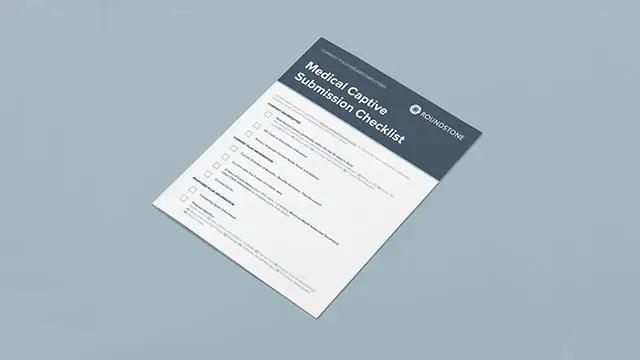Highlights
- Rising healthcare costs and limited transparency make cost containment a top challenge for advisors and their clients.
- When you work with us, you gain real-time access to the CSI Dashboard, a tool that gives you insight into claims data.
- With the Dashboard, you can benchmark costs, identify spending outliers, and optimize plan design for your clients.
- Empower your clients to manage healthcare costs confidently, strengthening your role as a trusted, indispensable advisor.
As healthcare costs climb, your clients are under pressure to balance quality care with effective cost-containment strategies. As their advisor, you’re on the front line, tasked with finding solutions that cut costs without sacrificing quality.
To make that task easier, Roundstone’s team of Cost Saving Investigators (CSI) has created a personalized platform that brings crucial insights into what’s driving costs—and how to keep them manageable.
When you work with Roundstone, the CSI Dashboard is your ultimate toolkit for healthcare cost containment. Now, you have the data-driven power to control costs and deliver better healthcare outcomes.
Here are eight ways the CSI Dashboard can help you cut costs for your clients.
1. Leverage Real-Time Claims Analysis for Cost Containment

Without clear data, businesses struggle to see where their money goes, leading to inefficiencies and unnecessary expenses. Relying on annual reviews alone can leave you scrambling to catch up with changing trends and missed opportunities.
As an advisor to Roundstone group captive members, you will have access to the CSI Dashboard. This valuable tool provides real-time claims data so your clients can proactively identify excessive spending and implement cost-savings strategies.
The Dashboard provides automated monthly reports to highlight these opportunities, so you can make an immediate impact.
Example in Action: Real-time data from the CSI Dashboard reveals a spike in high-cost imaging services, such as MRIs and CT scans, being used for non-critical diagnoses. You recommend that your client implement a pre-authorization requirement for certain imaging services, ensuring they are medically necessary before approval. This measure helps the client reduce unnecessary imaging costs.
2. Benchmark to National Averages for Healthcare Cost Savings
Your clients might not even realize they’re overpaying for healthcare services. If they don’t know how to compare, they might miss out on healthcare cost savings. With the right insight, you can guide them to healthcare plan customization that solves their budgeting issues.
With the CSI Dashboard, you can compare your client’s data against national averages. Our insights can uncover things like identifying which ER visits are preventable, or costs to manage chronic diseases that are far above the norm.
With knowledge about these opportunities, you can guide clients to implement innovative strategies for cost savings that have a long-term impact.
Example in Action: You discover that a client is spending significantly more than the national average on specialty care visits, such as dermatology and allergy consultations. You recommend creating a referral pathway that directs employees to primary care or virtual consultations before specialty visits when appropriate. This strategy lowers specialty care costs and encourages more efficient use of healthcare resources, ultimately helping the client achieve sustainable cost savings.
3. Manage Risk With Claims Data Transparency

Unexpected claims can severely disrupt a company’s budget. Being prepared can make the difference between staying within budget or facing a financial setback.
The CSI Dashboard flags high-cost claims as they arise, giving you time to recommend proactive steps, such as care management programs or enhanced stop-loss coverage.
Example in Action: You identify an employee’s recurring ER visits related to unmanaged diabetes early on and alert your client to a potential high-cost claim down the line. You recommend a care management plan, including personalized support and access to a diabetes management program. This intervention improves the employee’s health and helps your client avoid significant future claims.
4. Optimize Prescription Benefit Management for Cost Reduction
Prescription drug prices often outpace other healthcare expenses and create a significant financial burden for employers and employees alike.
With the CSI Dashboard, you have continuous access to prescription spending data, allowing you to pinpoint cost-saving opportunities that might otherwise go unnoticed. This powerful tool helps you track spending patterns across medication categories, identify potential areas of waste, and address rising drug costs before they impact your client’s budget.
Example in Action: A client is overspending on brand-name medications. You guide them to incentivize generics and switch to a transparent Pharmacy Benefits Manager (PBM), interventions that lower their prescription spend by 20%.
5. Promote Preventative Care and Wellness Programs for Strategic Cost Savings
Chronic diseases are the leading drivers of healthcare costs, affecting both workforce health and client budgets. Preventing these conditions is both more effective and more affordable than treating them after they arise.
By monitoring data in the CSI Dashboard, you can spot trends such as rising claims related to chronic conditions like heart disease or mental health diagnoses. Advising your clients to implement preventative programs can reduce these high-cost claims and support employee well-being.
Example in Action: The Dashboard highlights an increase in claims related to hypertension and diabetes management. You suggest your client introduce a preventative care initiative, such as regular health screenings and access to nutrition counseling. Your client sees a decline in costly claims for advanced treatments and hospitalizations related to these chronic conditions.
6. Evaluate Vendor Performance for Better Cost Control
Poor vendor performance can quietly drain resources, especially when there’s a lack of transparency in healthcare services. The CSI Dashboard helps you quickly identify underperformance, so your clients aren’t paying for services that fail to deliver value.
Example in Action: The Dashboard reveals that a particular vendor charges significantly higher fees for lab services than other providers in the area. You identify alternative vendors who offer the same quality of service at a lower cost. Your client reduces their overall spending on diagnostic testing without compromising the quality of care for employees.
7. Adjust Plan Design Using Data Insights
Comprehensive plans are valuable, but they should align with employees’ actual needs. Without data, your clients risk overspending on underused services.
The CSI Dashboard offers real-time tracking to help you reallocate funds from unused services to those in higher demand. Automated updates keep you informed so you can advise your clients to focus their spending on benefits that employees actively use.
Example in Action: Data reveals that employees rarely use a high-cost orthopedic specialist included in the plan, while they frequently use physical therapy services with long wait times. You recommend reallocating funds from the underused orthopedic service to expand physical therapy options, such as adding more in-network providers. This adjustment lowers overall costs and improves employee satisfaction by providing faster access to the services they need most.
8. Support Employee Education for Long-Term Cost Containment

Even the best-designed healthcare plans can face high costs if employees don’t fully understand how to use their benefits effectively. Educating employees on cost-effective healthcare choices—like choosing urgent care over ER visits for non-emergencies—can lead to significant long-term savings.
With the CSI Dashboard, you gain insights into employee healthcare utilization patterns. If you notice high costs stemming from common, preventable choices, you can advise your client to roll out targeted education programs.
Example in Action: The CSI Dashboard data reveals that many employees are choosing brand-name medications even when affordable generics are available. You recommend that your client implement an educational campaign highlighting the benefits and cost savings of generic drugs. By encouraging this switch, employees reduce their out-of-pocket expenses, and your client benefits from lower prescription claims, contributing to a more sustainable healthcare plan.
Empower Your Clients—and Your Book of Business—with the CSI Dashboard
As healthcare costs continue to rise and transparency diminishes, advisors need reliable tools to guide clients toward smarter, more cost-effective healthcare strategies. Roundstone’s CSI Dashboard does just that, putting actionable data and real-time insights at your fingertips. This comprehensive tool empowers you to anticipate costly claims, improve plan efficiency and create lasting value for your clients.
Whether it’s analyzing prescription trends or benchmarking services against national standards, the Dashboard positions you as the advisor clients trust to manage their healthcare costs intelligently.
Ready to drive impactful change? Speak to a Roundstone representative today to establish yourself as the advisor they can’t afford to live without.











